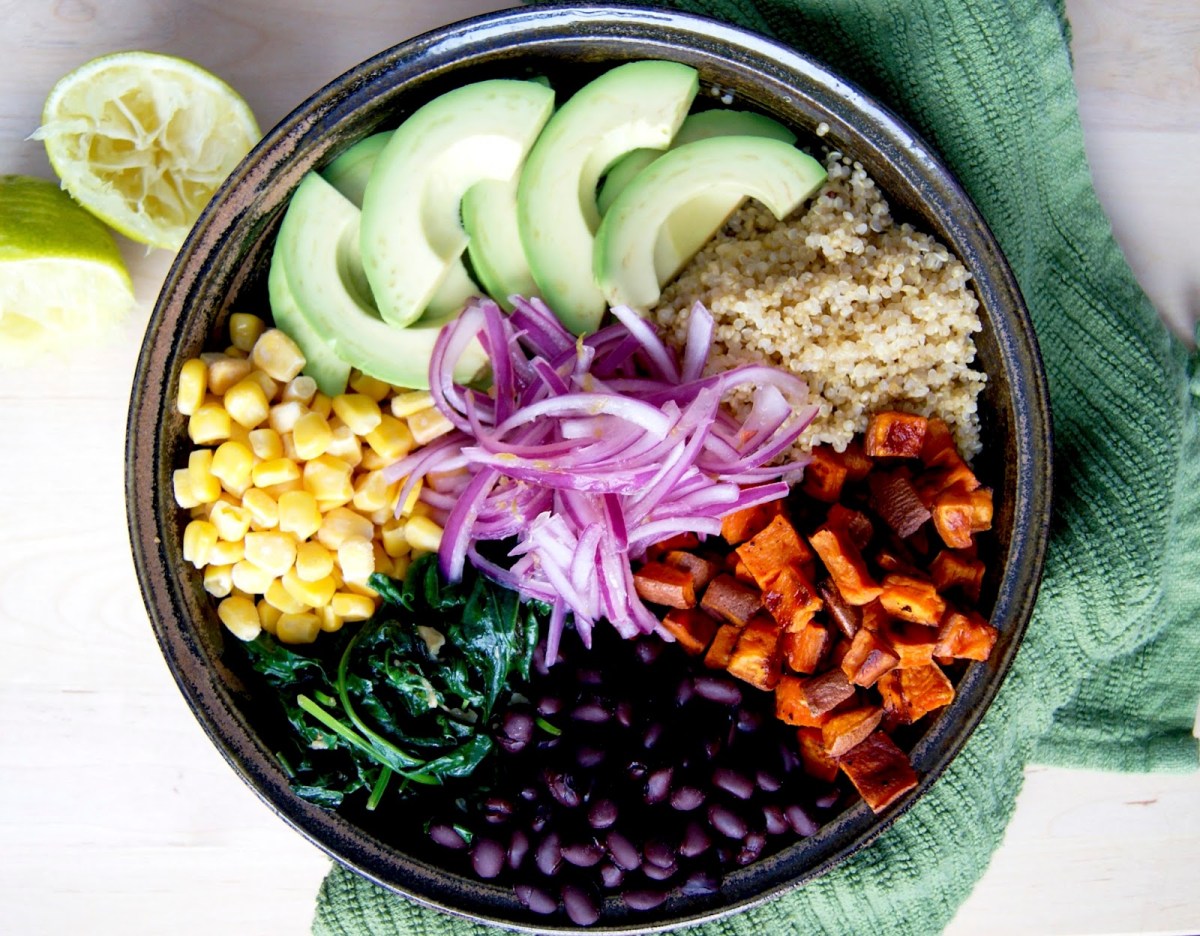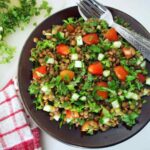Imagine creamy, decadent dishes bursting with flavor, all without a single dairy product in sight. This collection of dairy-free vegetarian recipes proves that richness and indulgence aren’t solely dependent on cream or butter. We’ll explore the secrets to crafting luxuriously smooth sauces, pastas, soups, and side dishes using innovative plant-based alternatives, transforming your culinary landscape with vibrant textures and unforgettable tastes. Prepare to discover a world of creamy delights that are both satisfying and surprisingly easy to create.
From velvety cashew cream sauces clinging lovingly to perfectly cooked pasta to hearty, comforting soups brimming with creamy goodness, we’ll guide you through each step, offering tips and tricks to achieve that perfect creamy consistency every time. We’ll delve into the unique flavor profiles of different plant-based alternatives, helping you choose the perfect ingredient to complement your chosen dish. Get ready to elevate your vegetarian cooking to a whole new level of creamy perfection.
Creamy Dairy-Free Sauces
Dairy-free cooking doesn’t mean sacrificing creaminess! These three versatile sauces offer rich, decadent textures and flavors without any dairy products, perfect for elevating your pasta dishes, vegetables, or soups. Each sauce boasts a unique profile, allowing for culinary flexibility and delicious experimentation.
Cashew Cream Sauce
Cashew cream sauce offers a luxuriously smooth and subtly sweet base. Its mild flavor makes it incredibly adaptable to various cuisines and taste preferences.
Ingredients: 1 cup raw cashews (soaked in hot water for at least 30 minutes), 1 cup water, 2 tablespoons lemon juice, 1 tablespoon nutritional yeast (for cheesy flavor), 1 clove garlic (minced), salt and pepper to taste.
Preparation: Drain the soaked cashews and combine all ingredients in a high-speed blender. Blend until completely smooth and creamy, adding more water if needed to reach desired consistency. Taste and adjust seasonings as needed. This sauce pairs beautifully with pasta primavera, roasted vegetables, or creamy tomato soup, adding a subtle sweetness and nutty depth.
Coconut Cream Sauce
Coconut cream sauce provides a richer, more intense flavor profile compared to cashew cream. Its naturally sweet and slightly tangy taste lends itself to both savory and sweet applications.
Ingredients: 1 can (13.5 oz) full-fat coconut milk (refrigerated overnight for easier separation), 1 tablespoon lime juice, 1 tablespoon soy sauce (or tamari for gluten-free), 1 teaspoon grated ginger, red pepper flakes (optional), salt to taste.
Preparation: Scoop out the thick, solidified coconut cream from the top of the refrigerated can, leaving the watery liquid behind. Place the coconut cream in a blender and add the remaining ingredients. Blend until smooth and creamy. This sauce is exceptional with Thai-inspired curries, stir-fries featuring vegetables like broccoli and carrots, or even as a topping for sweet potato fries, lending a tropical twist to your culinary creations.
Tofu Cream Sauce
Tofu cream sauce offers a neutral canvas for bold flavors, providing a creamy texture without the inherent sweetness of cashew or coconut. Its versatility allows for easy customization to match various dishes.
Ingredients: 1 block (14 oz) extra-firm tofu (pressed to remove excess water), ¼ cup nutritional yeast, 2 tablespoons lemon juice, 1 tablespoon tahini, 2 tablespoons water (or more, as needed), salt and pepper to taste.
Preparation: Crumble the pressed tofu into a food processor. Add the remaining ingredients and process until completely smooth and creamy. Add more water if needed to adjust the consistency. This sauce is perfect for pasta carbonara (using nutritional yeast for a cheesy flavor), creamy mushroom soup, or as a base for creamy vegetable dips, providing a blank slate for building complex and savory flavor profiles.
Texture and Flavor Profile Comparison
Cashew cream sauce presents a smooth, velvety texture with a subtly sweet and nutty flavor. Coconut cream sauce offers a thicker, richer texture with a pronounced coconut flavor that’s both sweet and slightly tangy. Tofu cream sauce possesses a lighter, slightly more neutral flavor, offering a smooth yet less intensely rich texture than the other two. The cashew cream’s mildness allows for easy flavor adjustments with herbs, spices, and other additions, while the coconut cream’s inherent sweetness and the tofu cream’s neutrality allow for versatile flavor pairings.
Nutritional Information Per Serving (approximately ½ cup)
| Sauce Type | Fat (g) | Protein (g) | Calories |
|---|---|---|---|
| Cashew Cream | 15-20 | 3-5 | 200-250 |
| Coconut Cream | 25-30 | 2-4 | 250-300 |
| Tofu Cream | 10-15 | 7-9 | 150-200 |
Dairy-Free Vegetarian Pasta Dishes

Dive into a world of creamy, decadent pasta dishes that are entirely free of dairy, yet bursting with rich, satisfying flavor. These recipes showcase the versatility of dairy-free sauces, transforming simple pasta into culinary masterpieces. Each dish offers a unique flavor profile and texture, proving that a plant-based diet can be both delicious and incredibly satisfying.
Creamy Cashew Pesto Pasta with Roasted Vegetables
This vibrant pasta dish combines the nutty richness of cashew pesto with the sweetness of roasted vegetables, creating a symphony of textures and tastes.
- Roast the Vegetables: Preheat oven to 400°F (200°C). Toss chopped broccoli florets, bell peppers (red and yellow), and zucchini with olive oil, salt, and pepper. Roast for 20-25 minutes, until tender and slightly caramelized. Imagine the vibrant colors: deep green broccoli, sunny yellow and fiery red peppers, and a soft, pale green zucchini.
- Prepare the Cashew Pesto: Blend 1 cup raw cashews (soaked in hot water for 30 minutes to soften), 1/2 cup fresh basil leaves, 2 cloves garlic, 1/4 cup nutritional yeast, 2 tablespoons lemon juice, 1/4 cup olive oil, salt, and pepper until smooth and creamy. The pesto will be a vibrant, deep green, almost emerald in its hue, punctuated by flecks of bright green basil.
- Cook the Pasta: Cook your favorite pasta according to package directions. Picture perfectly al dente pasta, glistening with a light sheen.
- Combine and Serve: Toss the cooked pasta with the cashew pesto and roasted vegetables. The pesto will coat the pasta evenly, creating a creamy, vibrant green sauce. Garnish with extra basil leaves and a sprinkle of toasted pine nuts for added texture and visual appeal. The finished dish is a colorful masterpiece, a vibrant mix of greens, yellows, and reds.
Tips for Creamy Texture: Soaking the cashews ensures a super smooth, creamy pesto. Adjust the amount of olive oil to achieve your desired consistency. Adding a tablespoon or two of pasta water can help thin the sauce if needed.
Creamy Tomato and Sun-dried Tomato Pasta with Spinach
This dish offers a deep, rich tomato flavor with the added tang of sun-dried tomatoes and the freshness of spinach.
- Sauté Aromatics: Sauté minced garlic and finely chopped shallots in olive oil until fragrant. Imagine the golden-brown shallots releasing their sweet aroma, mingling with the pungent garlic.
- Simmer the Sauce: Add a can of crushed tomatoes, a handful of chopped sun-dried tomatoes (oil-packed, drained), and a pinch of red pepper flakes to the pan. Simmer for 15 minutes, allowing the flavors to meld. The sauce will deepen in color, transitioning from a bright red to a rich, almost burgundy hue.
- Add Creaminess: Stir in 1/4 cup of your favorite dairy-free cream (coconut cream or cashew cream work well). The cream will enrich the sauce, giving it a luxurious, velvety texture.
- Cook the Pasta and Spinach: Cook your pasta according to package directions. Add fresh spinach to the sauce during the last minute of cooking time, allowing it to wilt slightly. The spinach will add a vibrant pop of green to the deep red sauce.
- Combine and Serve: Toss the cooked pasta with the creamy tomato sauce and spinach. Garnish with grated vegan parmesan cheese and a drizzle of olive oil. The finished dish is a study in contrasting colors and textures, the bright green spinach contrasting beautifully against the deep red sauce.
Tips for Creamy Texture: Simmering the sauce allows the flavors to deepen and the tomatoes to break down, creating a naturally creamy texture. Adding a little pasta water can help to adjust the consistency.
Creamy Mushroom and White Bean Pasta with Lemon Zest
This elegant pasta dish features earthy mushrooms and creamy white beans, brightened by the zest of a fresh lemon.
- Sauté Mushrooms: Sauté sliced cremini mushrooms and shiitake mushrooms in olive oil until tender and slightly browned. The mushrooms will release their moisture, creating a rich, savory base for the sauce. Imagine the earthy aroma filling your kitchen.
- Add Beans and Broth: Stir in a can of cannellini beans (rinsed and drained), 1/2 cup vegetable broth, and a tablespoon of nutritional yeast. Simmer for 5 minutes, allowing the flavors to blend. The beans will soften slightly, creating a creamy texture. The sauce will take on a pale, creamy ivory color.
- Season and Thicken: Season with salt, pepper, and a squeeze of lemon juice. If the sauce is too thin, simmer for a few more minutes to reduce it. A tablespoon of cornstarch mixed with a little water can also be used as a thickener.
- Cook the Pasta: Cook your pasta according to package directions. The pasta will absorb the sauce beautifully, creating a cohesive, flavorful dish.
- Combine and Serve: Toss the cooked pasta with the mushroom and white bean sauce. Garnish with fresh parsley, lemon zest, and a drizzle of olive oil. The finished dish is a beautiful palette of earthy browns and pale creams, brightened by the pops of green from the parsley and the vibrant yellow of the lemon zest.
Tips for Creamy Texture: Using a good quality vegetable broth adds depth of flavor and helps create a creamier sauce. The beans themselves contribute significantly to the creamy texture. Adding a touch of cornstarch slurry helps to achieve the perfect consistency.
Exploring Different Creamy Dairy-Free Alternatives
Achieving a luxuriously creamy texture in vegetarian cooking without dairy requires exploring a range of plant-based ingredients. Each offers a unique flavor profile and texture, making them suitable for various applications. Understanding these nuances allows for creative and delicious dairy-free cooking.
Five key players in the world of dairy-free creamy cooking are nutritional yeast, silken tofu, cashews, almonds, and sunflower seeds. Each brings its own distinct characteristics to the table, impacting both the flavor and the final consistency of your dish.
Nutritional Yeast’s Unique Contribution to Creamy Textures
Nutritional yeast, with its cheesy, nutty flavor and fine powder texture, adds a savory depth to sauces and soups. Its slightly granular texture, while not as smooth as some other options, blends seamlessly into creamy sauces, providing a unique umami element that enhances the overall taste. Its versatility makes it suitable for pasta sauces, cheese sauces, and even as a topping for roasted vegetables. The pale yellow powder dissolves easily into warm liquids, making it simple to incorporate into recipes.
Silken Tofu: A Smooth and Versatile Base
Silken tofu, with its incredibly smooth and almost custard-like consistency, forms the foundation of many creamy dairy-free recipes. Its mild flavor allows it to adapt to various flavor profiles, making it ideal for both sweet and savory applications. Blended with broth, lemon juice, or other flavorful ingredients, silken tofu creates incredibly smooth sauces and soups. Its texture is exceptionally smooth, almost velvety, offering a luxurious mouthfeel that rivals cream.
Cashews: Richness and Creaminess in Every Bite
Soaked cashews, when blended with water, transform into a rich and creamy base for sauces, dips, and dressings. Their naturally sweet and slightly buttery flavor adds a depth of richness that complements both savory and sweet dishes. The resulting cashew cream is exceptionally smooth, offering a luxurious texture that’s perfect for creating decadent sauces for pasta or as a base for vegan cheese. The creaminess is unparalleled among the options discussed.
Almonds: A Nutty and Creamy Alternative
Similar to cashews, soaked almonds create a creamy texture when blended. However, their flavor profile is slightly more assertive, with a pronounced nutty taste that adds a unique dimension to dishes. Almonds offer a slightly thicker cream compared to cashews, making them suitable for dishes where a more substantial texture is desired, such as vegan cream cheese or a thicker sauce. The almond’s subtle bitterness adds complexity.
Sunflower Seeds: A Budget-Friendly Creamy Option
Sunflower seeds, when blended with water or broth, create a surprisingly creamy sauce or base. They are a more budget-friendly option compared to nuts, offering a subtly nutty flavor and a lighter, less dense cream than cashews or almonds. Their texture is slightly less smooth than nut-based creams but still provides a satisfyingly creamy mouthfeel. This option is excellent for those seeking an affordable and versatile dairy-free alternative.
Creating a Simple Creamy Cashew Sauce
This recipe demonstrates the ease of making a creamy sauce using soaked cashews.
- Soak the cashews: Place 1 cup of raw cashews in a bowl and cover with boiling water. Let them soak for at least 30 minutes, or preferably overnight, to soften them.
- Blend the cashews: Drain the soaked cashews and add them to a high-speed blender along with 1/2 cup of water, 2 tablespoons of nutritional yeast, 1 tablespoon of lemon juice, 1 clove of garlic (minced), and salt and pepper to taste.
- Adjust consistency: Blend until completely smooth and creamy, adding more water if needed to reach your desired consistency. A thicker sauce requires less water.
- Season and serve: Taste and adjust seasoning as needed. This sauce can be served over pasta, vegetables, or used as a dip.
Unlocking the secrets to dairy-free creamy cooking opens up a world of culinary possibilities. With a little creativity and the right techniques, you can effortlessly create rich and flavorful dishes that rival their dairy-laden counterparts. This journey through dairy-free vegetarian recipes has shown that creamy textures are achievable without compromise, offering a healthier, more versatile, and equally delicious approach to your favorite comfort foods. So, embrace the plant-based revolution and embark on a culinary adventure filled with creamy, satisfying, and unforgettable meals.
Top FAQs
Can I use frozen vegetables in these recipes?
Yes, frozen vegetables work well in many of these recipes, especially soups and stews. Just be sure to adjust cooking times accordingly, as they may require less cooking time than fresh vegetables.
How can I store leftover creamy dairy-free sauces?
Store leftover sauces in airtight containers in the refrigerator for up to 3-4 days. Allow them to cool completely before refrigerating to prevent bacterial growth.
Are all dairy-free alternatives interchangeable?
No, each dairy-free alternative has a unique flavor and texture. While some are more versatile than others, experimenting is key to finding your favorites for different applications.
What if my sauce becomes too thick or too thin?
If too thick, add a little plant-based milk or water to thin it out. If too thin, simmer it uncovered for a few minutes to reduce the liquid.


